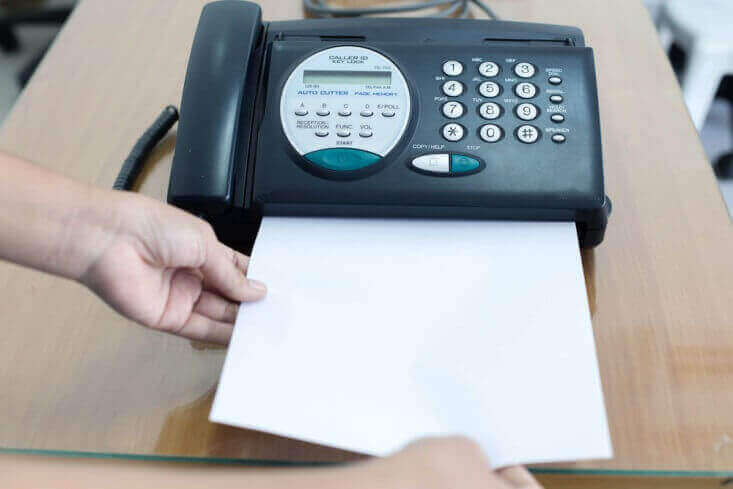The introduction of fax technology allowed medical practices and hospitals to securely share patient medical information more rapidly than ever before. The introduction of the Health Insurance Portability and Accountability Act of 1996 (HIPAA) ensured many physicians and hospitals would continue to rely on fax machines as a universally accepted method for sharing patient medical records and health information.

Today, health care providers are generating more patient information than ever before, and patients are demanding better access to that data. Patients expect to have access to their own medical information online, and they want to be able to communicate with doctors via email and text messaging. Add government regulations and the need to better protect patient information into the mix and it becomes tough to see a place for the fax machine in health-care, today. Or does it?
New, modern ways to communicate and share information combine privacy and security with convenience and speed, to meet the needs and demands of 21st-century health care providers and their patients. Here are five of the best technologies that let health care providers securely exchange patient information.
1. HIPAA-Compliant Cloud Faxing
HIPAA-compliant cloud faxing allows providers to send patient medical records to other providers via e-fax. Services that provide HIPAA-compliant cloud faxing take great pains to make sure the information they send and receive is as secure as it would be if sent via a traditional fax machine. Patient medical records are stored securely in the cloud, and HIPAA-compliant cloud faxing services allow providers to send and receive health records on their computers, laptops, or mobile devices.
When using a cloud faxing service to send and receive medical records, HIPAA requires that hospitals and physicians enter into a Business Associate Agreement (BAA) with the cloud faxing service provider. Under such an agreement, the cloud faxing service agrees to only use patient medical information appropriately and protect it from appropriation and misuse by others.
2. Encrypted Email Communications
Most email is not secure. Data transmitted by email is difficult to track and there is no way you can control who might intercept the information or store it. For these reasons, standard email communications are not sufficient for sharing patient health information.

However, password-protected email is the exception. These emails are encrypted, and can only be opened and read by a recipient who possesses an encryption key, or password. While secure, password-protected email is less convenient than other means of communication, because the sender must ensure that the recipient — and no one else — gets the password in a timely fashion. Similar encryption is also available for text messages.
3. Virtual Private Networks (VPNs)
VPNs are already commonly used among companies that want their employees to have access to sensitive company data while working remotely. Using a VPN, providers can access sensitive patient medical information from any device, as long as they have the right software. There is no need to download any private files containing sensitive information, or transmit information in any other way that might compromise security.
It’s important to understand that, while VPNs make the secure delivery of information possible, they don’t actually do any of the delivering. A provider must log into the secure network and send or receive data to other providers and hospitals that also have access to the network, via email or another method.
VPNs are very secure; however, traffic on these networks can be slow. It can also be difficult to provide different degrees of protection for information of varying degrees of security.
4. Password-Protected Documents
Similar to encrypted emails, password-protected documents allow providers to send sensitive information as an email attachment. Unlike a standard email attachment, the recipient needs a password in order to open it. Password protecting is available for PDFs and Word documents and can be implemented as two-way protection, requiring both the sender and the recipient to enter a password during the transmission process. Read-only documents prevent tampering on either end.
If sent via email on an unsecure network, a password-protected document could, theoretically, be intercepted and hacked into. They are best exchanged in the secure environment of a VPN.
5. Patient/Provider Portals
Patient/provider portals are already gaining in popularity as a way for patients to request appointments and prescription refills, keep track of medical information and test results, and communicate electronically with their health care providers. They are kind of like online bank accounts, but for your doctor’s office. Patients can log into the portal to send their requests and messages. Providers can then log in to view and respond to requests, as well upload test results and list the basics of patients’ medical history.
Providers can also take advantage of similar website portals to securely share information with other providers, pharmacies, and billing agents. Those who need access to a patient’s information can log into the portal with a username and password. Health care workers can upload medical records and other sensitive documents in the portal for viewing or secure downloading.
Though most offices have long allowed their fax machines to gather dust in favour of communicating by email, many physicians and hospitals still rely on faxes to send patient medical information in a secure fashion. However, for providers who want to an even more convenient, but still secure, way to communicate with patients and share patient information with those who need it, there are plenty of other options.
The squeal and hum of that geriatric fax machine in your doctor’s office may well have already ended, but it is clear that faxing itself is here to stay for a while.